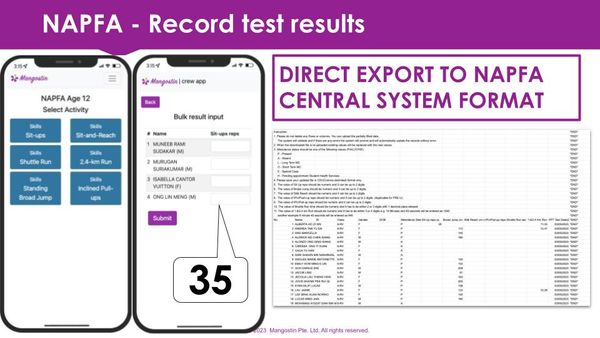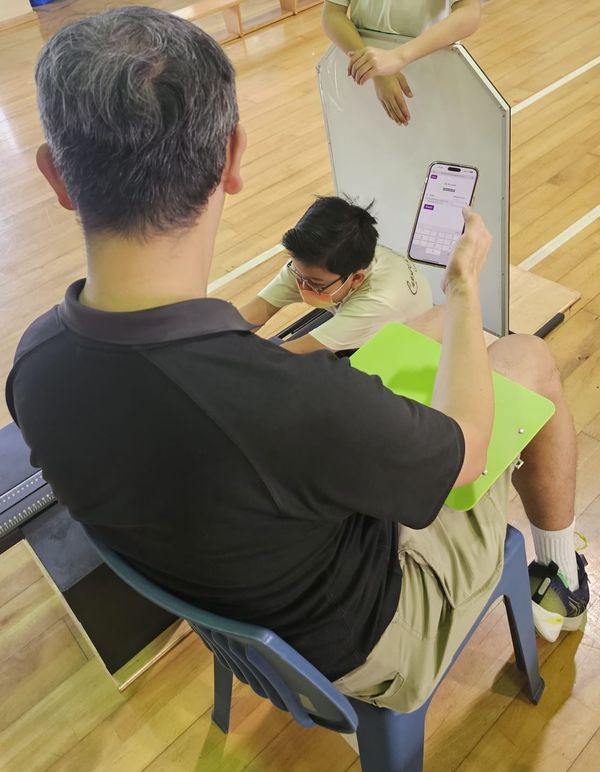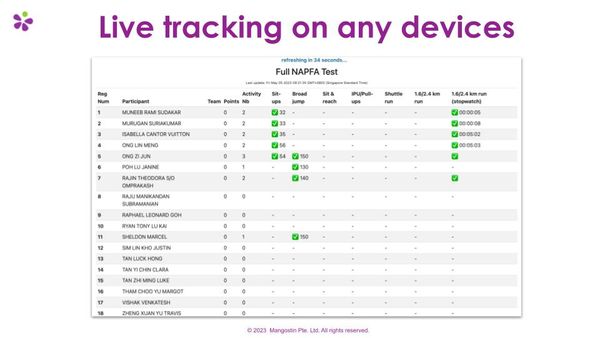
The key considerations in organizing the NAPFA tests:
- Who are the testers ? Teachers vs. students
- How to efficiently identify students ?
- How to organize test sessions? One session per class vs. several classes per session
Why Mangostin for NAPFA
- Record digitally the students results of the 6 stations
- Time the 1.6/2.4k run
- Track live the whole class activity completion
- Export automatically all the results into the NAPFA central system (cockpit) format
Testers (teachers or students) only need a handphone, tablet or laptop.

Set up for the 1.6k Run
In both cases, students are required to run several laps for the 1.6k.
ATS - teacher-led
1 block per class. Each class is split in 2 waves.
Students wear a bib with their index numbers.
- one teacher calls the bib numbers
- one teacher taps the bib numbers in Mangostin app using the school laptop.
- one teacher anounces the number of lap left for the students using the Mangostin on the handphone
SAPS - student-led
1 block per class. Each class is split in 2 waves.
Students are paired up:
- one runs,
- the buddy records and announces the lap times using the Mangostin app on a school tablet.
- Then they switch.
Set up for the 5 others NAPFA stations
ATS - 1 session per class
- 1 session per class
- Up to 10 teachers as testers deployed over the 5 stations.
- Teachers record students scores with the Mangostin app on their handphones.
SAPS - 1 session for all P6 classes
- A 2-hour block for the six P6 classes
- Four teachers per station. Teachers record students scores with the Mangostin app on their handphones.
- Students are split in group of 5 and are able to freely roam between the 5 stations.
Mangostin Web App

Teachers can track

